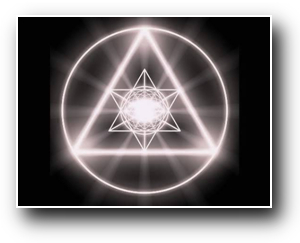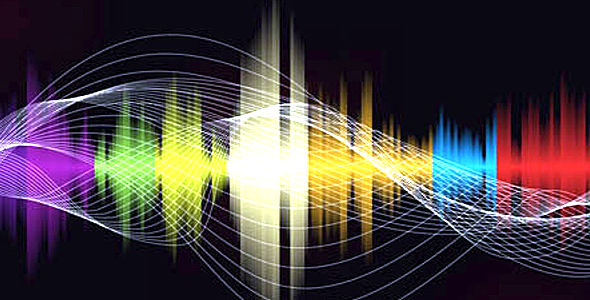FOLLOW:
The Mysticism of Sound
 By Hazrat Inayat Khan
By Hazrat Inayat Khan
Abstract sound is called sawt-e-sarmad by the Sufis; all space is filled with it. The vibrations of this sound are too fine to be either audible or visible to the material ears or eyes, since it is even difficult for the eyes to see the form and color of the ethereal vibrations on the external plane.
It was the sawt-e-sarmad, the sound of the abstract plane, which Muhammed heard in the cave of Ghar-e-Hira when he became lost in his divine ideal. The Qur’an refers to this sound in the words: ‘Be! and all became’.
Moses heard this sound on Mount Sinai when in communion with God, and the same word was audible to Christ when absorbed in his heavenly Father in the wilderness. Shiva heard the same anahad nada during his samadhi in the cave of the Himalayas. The flute of Krishna is symbolic of the same sound. This sound is the source of all revelation to the Masters to whom it is revealed from within. It is because of this that they know and teach one and the same truth.
The Sufi knows of the past, present and future, and about all things in life, by being able to know the direction of sound. Every aspect of one’s being in which sound manifests has a peculiar effect upon life, for the activity of vibrations has a special effect in every direction. The knower of the mystery of sound knows the mystery of the whole universe. Whoever has followed the strains of this sound has forgotten all earthly distinctions and differences, and has reached that goal of truth in which all the blessed ones of God unite.
Space is within the body as well as around it; in other words, the body is in the space and the space is in the body. This being the case, the sound of the abstract is always going on within, around and about man. Man does not hear it as a rule, because his consciousness is entirely centered in his material existence. Man becomes so absorbed in his experiences in the external world through the medium of the physical body that space, with all its wonders of light and sound, appears to him blank.
This can be easily understood by studying the nature of color. There are many colors that are quite distinct by themselves; yet, when mixed with others of still brighter hue, they become altogether eclipsed. Even bright colors, when embroidered with gold, silver, diamonds or pearls, serve merely as a background to the dazzling embroidery. So it is with the abstract sound compared with the sounds of the external world. The limited volume of earthly sounds is so concrete that it dims the effect of the sound of the abstract to the sense of hearing, although in comparison to it the sounds of the earth are like that of a whistle to a drum. When the abstract sound is audible, all other sounds become indistinct to the mystic.
The sound of the abstract is called anahad in the Veda, meaning unlimited sound. The Sufis name it sarmad, which suggests the idea of intoxication. The word intoxication is here used to signify upliftment, the freedom of the soul from its earthly bondage. Those who are able to hear the sawt-e-sarmad and meditate on it are relieved from all worries, anxieties, sorrows, fears and diseases, and the soul is freed from captivity in the senses and in the physical body. The soul of the listener becomes the all-pervading consciousness, and his spirit becomes the battery which keeps the whole universe in motion.
Some train themselves to hear the sawt-e-sarmad in the solitude, on the sea shore, on the river bank and in the hills and dales; others attain it while sitting in the caves of the mountains, or when wandering constantly through forests and deserts, keeping themselves in the wilderness apart from the haunts of men. Yogis and ascetics blow sing – a horn, or shanka – a shell, which awakens in them this inner tone. Dervishes play nai or alghoza – a double flute – for the same purpose. The bells and gongs in the churches and temples are meant to suggest to the thinker the same sacred sound, and thus lead him towards the inner life.
This sound develops through ten different aspects because of its manifestation through ten different tubes of the body. It sounds like thunder, the roaring of the sea, the jingling of bells, running water, the buzzing of bees, the twittering of sparrows, the vina, the whistle, the sound of shanka – until it finally becomes Hu, the most sacred of all sounds.
This sound Hu is the beginning and end of all sounds, be they from man, bird, beast, or thing. A minute study will prove this fact, which can be realized by listening to the sound of the steam engine or of a mill, while the echo of bells or gongs gives a typical illustration of the sound Hu.
The Supreme Being has been called by various names in different languages, but the mystics have known him as Hu, the natural name, not man-made, the only name of the nameless which all nature constantly proclaims.
The sound Hu is most sacred; the mystics of all ages called it Ismi-Azam, the name of the most High, for it is the origin and end of every sound as well as the background of each word. The word Hu is the spirit of all sounds and of all words, and is hidden under them all, as the spirit in the body. It does not belong to any language, but no language can help belonging to it.
This alone is the true name of God, a name that no people and no religion can claim as their own. This word is not only uttered by human beings, but is repeated by animals and birds. All things and beings exclaim this name of the Lord, for every activity of life expresses distinctly or indistinctly this very sound. This is the word mentioned in the Bible as existing before the light came into being: ‘In the beginning was the word, and the word was with God, and the word was God’.
The mystery of Hu is revealed to the Sufi who journeys through the path of initiation.7 The more a Sufi listens to sawt-e-sarmad, the sound of the abstract, the more his consciousness becomes free from all the limitations of life. The soul floats above the physical and mental plane without any special effort on man’s part, which shows its calm and peaceful state; a dreamy look comes into his eyes and his countenance becomes radiant; he experiences the unearthly joy and rapture of wajad or ecstasy. When ecstasy overwhelms him he is neither conscious of the physical existence nor of the mental. This is the heavenly wine to which all Sufi poets refer, which is totally unlike the momentary intoxications of this mortal plane.
A heavenly bliss then springs in the heart of a Sufi, his mind is purified from sin, his body from all impurities, and a pathway is opened for him towards the world unseen. He begins to receive inspirations, intuitions, impressions and revelations without the least effort on his part. He is no longer dependent upon a book or a teacher, for divine wisdom – the light of his soul, the Holy Spirit – begins to shine upon him.
‘I, by the light of soul, realize that the beauty of the heavens and the grandeur of the earth are the echo of Thy magic flute’. (Shefir)
Source: http://www.sufimessage.com/mysticism-of-sound/abstractsound.html

The Power of the Word
We find in the Bible the words: ‘In the beginning was the word, and the word was God’, and we also find that the word is light, and that when that light dawned the whole creation manifested. These are not only religious verses; to the mystic or seer the deepest revelation is contained in them.

Sikhism
A progressive religion well ahead of its time when it was founded over 500 years ago, The Sikh religion today has a following of over 20 million people worldwide and is ranked as the worlds 5th largest religion. Sikhism preaches a message of devotion and remembrance of God at all times, truthful living, equality of mankind and denounces superstitions and blind rituals.

Naam or Word – Hari Ras
Now we come to another term, “Hari Ras” or Divine intoxication. Whoever communes with the Word, Shabd or Naam feels an exhilarating effect, too sweet and too absorbing for words. Far from being inebriating and stupefying it raises one into a state of super-consciousness and universal awareness.

Vipassana Meditation: The Soothing Divinity of Sound
The Himalayan masters of ancient India developed the “sound current” that is now known as the “divine sound.” The divine sound is the foundation used for practicing various forms of yoga—nada, sahaj, Babaji, kriya, and Sikh practices such as shabda yoga.

Naam or Word – Evidence From Various Religions
If we go through the scriptures of various religions, we find clear references to the basic common factor, the Divine Light and Sound Current, as the only means for creation and maintenance of the universe and the regeneration of mankind.